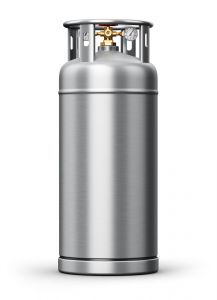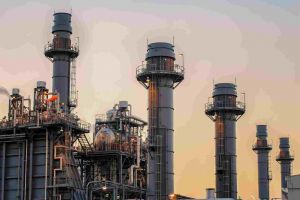Natural gas is Australia’s third-largest energy resource and export, after coal and oil. Due to its abundance and excellent cost and energy efficiencies, it’s a popular source of fuel for Australian homes and business. But as with any energy source, it pays to understand how it works and whether it’s the most cost-effective choice for your household before signing up to a plan with a gas provider.
To help you get your head around this topic, Canstar Blue breaks down everything you need to know about natural gas in Australia.
On this page:
- What is natural gas and what’s it used for?
- How is natural gas sourced?
- What is the difference between natural gas and LPG?
- What are the benefits of natural gas?
- Is natural gas a renewable energy source?
- Natural gas use in Australia
- Which companies supply natural gas in Australia?
- Should I get natural gas for my home?
What is natural gas and what’s it used for?
Natural gas is an odourless, colourless fossil fuel energy source. It mainly consists of methane with varying levels of combustible hydrocarbon gases. Natural gas is Australia’s third largest energy source, after coal and uranium, and is commonly used to power household heating and cooking appliances, as well as for electricity generation at power stations and for fueling manufacturing.
How is natural gas sourced?
Natural gas is sourced from gas fields, which house either oil and gas wells or coal seam gas wells. Australia is home to a number of onshore or offshore gas wells, with each one drilled by companies that then on-sell natural gas to the Australian market or export it overseas. Natural gas is accessed by drilling into underground reservoirs of rock, within which the gas has naturally formed. It is then extracted and sent to homes and businesses via Australia’s vast gas pipeline network.
What is the difference between natural gas and LPG?
 One of the key differences between natural gas and liquefied petroleum gas (LPG) is the way they are supplied to customers. Natural gas is typically sent to customers via underground pipelines, while LPG is delivered via gas cylinders – the kind you hook up to your barbecue or connect at the side of your house.
One of the key differences between natural gas and liquefied petroleum gas (LPG) is the way they are supplied to customers. Natural gas is typically sent to customers via underground pipelines, while LPG is delivered via gas cylinders – the kind you hook up to your barbecue or connect at the side of your house.
The reason for this difference is due to the different chemical makeup of natural gas and LPG. In Australia, LPG is a propane gas (in other countries it also contains butane) and is a by-product that is extracted from fossil fuels through a refining process. LPG needs to be safely pressurised into liquid form before being transported in cylinders to businesses and homes.
Natural gas, on the other hand, is much more stable, making it lighter and safe to transport through pipelines across the country.
Natural gas is well suited to power factories, industrial machinery and large homes, while LPG is best suited to small household appliances, such as barbecues and stoves, that don’t require a constant source of energy.
What are the benefits of natural gas?
There are a few notable advantages of using natural gas. These are:
- Reduced carbon emissions: Natural gas power plants emit about half as much carbon dioxide (CO2) into the atmosphere as coal-fired power plants.
- ‘Cleaner’ fossil fuel: As it’s a natural fuel source and consists mainly of methane, natural gas is generally considered a ‘cleaner’ fossil fuel option. This may explain why gas use in Australia has increased significantly over the last 30 years.
- Safer to transport: While other fuel sources, such as LPG, need stabilising treatments before they can be transported, natural gas is stable enough to be delivered to customers as soon as it has been extracted.
- Cheaper to produce: Unlike electricity and oil, which increases in price during peak demand periods, gas prices can sometimes decrease in times of demand because gas is easier to distribute in larger quantities.
Natural gas plans in your state
Gas Plans Compared in VIC
Here are some of the cheapest gas deals on our database for VIC. These estimated annual costs are based on the Australian Gas Network in Melbourne and yearly gas usage of 29,830MJ, but prices will vary depending on your circumstances. We show one product per retailer, listed in order of lowest estimated cost. This table includes products from referral partners†. Our database may not cover all deals in your area, and please check retailer websites for up to date information.
Gas Plans Compared in NSW
Here are some of the cheapest gas deals on our database for NSW. These estimated annual costs are based on the Jemena Gas Network in Sydney and yearly gas usage of 18,542MJ, but prices will vary depending on your circumstances. We show one product per retailer, listed in order of lowest estimated cost. This table includes products from referral partners†. Our database may not cover all deals in your area, and please check retailer websites for up to date information.
Gas Plans Compared in WA
Here are some of the cheapest gas deals on our database for WA. These estimated annual costs are based on the ATCO Network in Perth and yearly gas usage of 7,672 (units), but prices may vary depending on your circumstances. We show one product per retailer, listed in order of lowest estimated cost. This table includes products from referral partners†. Our database may not cover all deals in your area, and please check retailer websites for up to date information.
Gas Plans Compared in SA
Here are some of the cheapest gas deals on our database for SA. These estimated annual costs are based on the Australian Gas Network in Adelaide and yearly gas usage of 11,875MJ, but prices will vary depending on your circumstances. We show one product per retailer, listed in order of lowest estimated cost. This table includes products from referral partners†. Our database may not cover all deals in your area, and please check retailer websites for up to date information.
Gas Plans Compared in QLD
Here are some of the cheapest gas deals on our database for QLD. These estimated annual costs are based on the Australian Gas Network in Brisbane and yearly gas usage of 6,842MJ, but prices will vary depending on your circumstances. We show one product per retailer, listed in order of lowest estimated cost. This table includes products from referral partners†. Our database may not cover all deals in your area, and please check retailer websites for up to date information.
Is natural gas a renewable energy source?
Put simply, no, natural gas is not a renewable energy source. While natural gas is one of the cleanest fossil fuel sources, as it produces less carbon emissions than oil and coal, the methane, propane and butane found in natural gas still contribute to the world’s increasing greenhouse gas levels.
Is natural gas cheaper than electricity? Find out in our Natural Gas vs Electricity Guide.
Natural gas use in Australia
Natural gas is typically used in two ways in Australia; electricity generation and household energy.
Electricity generation

Australian energy statistics showed that natural gas accounted for 27% of energy consumption in Australia in 2023. Natural gas-fired power stations have an advantage over coal-fired power stations as they don’t take as long to begin operation. This is because gas-fired power stations use steam from heated water to push turbines and generate electricity, whereas coal-fired power stations use magnets and electrons to power them, which aren’t as efficient.
The water used in a natural gas-fired power station is what sets it apart from coal-fired power stations. The water allows the station to generate electricity faster and more efficiently than coal, as it is less reliant on electric currents. Because of this, natural gas-fired power stations are better equipped to handle peak electricity demand periods.
Household energy

Natural gas is commonly used as a household energy source in Australia, usually for heating, hot water and cooking. Thanks to the country’s gas distribution pipeline network, many Australian households have direct access to natural gas.
Assuming your property is connected to the distribution network, you can connect gas in your home by contacting an energy provider that offers natural gas. It’s worth asking the supplier how much a gas connection is going to cost and if there are any additional upfront charges.
Which companies supply natural gas in Australia?
The following retailers offer natural gas in Australia. Keep in mind some of these companies may only offer gas to customers who have an electricity account with them.
- 1st Energy
- ActewAGL
- AGL
- Alinta Energy
- CovaU Energy
- Dodo
- EnergyAustralia
- GloBird Energy
- Kleenheat
- Kogan Energy
- Lumo Energy
- Momentum Energy
- Origin Energy
- Perth Energy
- Powershop
- Red Energy
- Simply Energy
- Sumo Energy
- Tango Energy
Check out the best-rated gas suppliers in Australia:
Should I get natural gas for my home?
There are benefits to using natural gas as an energy source; it’s generally cheaper to purchase, easily accessible if your home is connected to the gas mains, and you’ll likely be lowering your carbon emissions.
It’s important to keep in mind though, that natural gas can only be used to power select appliances in your home, not your entire home. Some providers allow customers to bundle their electricity and gas – often referred to as dual fuel – but it’s important to do your research first. Why? Well, one provider may offer competitive electricity rates, but a steeper rate for gas. This isn’t to say that you can’t find a cheap bundled deal, as some dual fuel suppliers offer discounts for bundling household utilities.
If you have gas at home but haven’t compared suppliers for a while, it might be time to review your existing plan. Whether you check out our gas provider ratings pages, or compare prices in your area using our comparison tool below, the power is yours.
Image credits: Elgub/Shutterstock.com, Oleksiy Mark/Shutterstock.com, Factory_Easy/Shutterstock.com, Yevhen Prozhyrko/Shutterstock.com



Share this article